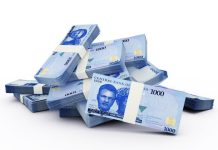The U.S dollar surged against the yen on Thursday, March 2, hitting two-week high, while it struggled to make more pace against a resilient euro.
The dollar index, which measures the greenback against a basket of six major currencies, was less than 0.1 percent higher on the day on Thursday at 101.84, down off a peak of 102.0 reached in Asian trading.
Governor Lael Brainard, a renowned dove on the Fed’s open market committee, was the latest to say on Wednesday that an improving global economy and a solid U.S. recovery mean it will be “appropriate soon” for the Fed to raise rates.
That fueled an almost half percent rise to a two-week high of 114.31 yen and put the dollar in positive territory for a third day running against the euro and its fifth against the pound.
Yet the scale of the gains, given the huge swing in expectations for a Fed hike – from 30 percent at the start of the week to roughly 70 percent on Thursday – was still relatively modest: the dollar index has gained just under 0.7 percent in that time.
“The fact that the dollar hasn’t managed to rally to any order of magnitude is of concern to dollar bulls,” said Richard Benson, co-head of portfolio management with currency fund Millennium Global in London.
A widening of U.S.-Japan interest rate differentials helped the dollar, the U.S. two-year yield hovering near a more than seven-year high of 1.308 percent. The benchmark 10-year Treasury yield was also close to a two-week high, last standing at 2.461 percent.
However, some analysts warned that the dollar could weaken despite the widening interest rate differentials should stocks retreat.
Traders cite a steady drip of corporate demand for the euro, but Millennium’s Benson and a number of others point to the need for a bigger move in yields of longer-dated U.S. Treasuries if the greenback is to rise further.













